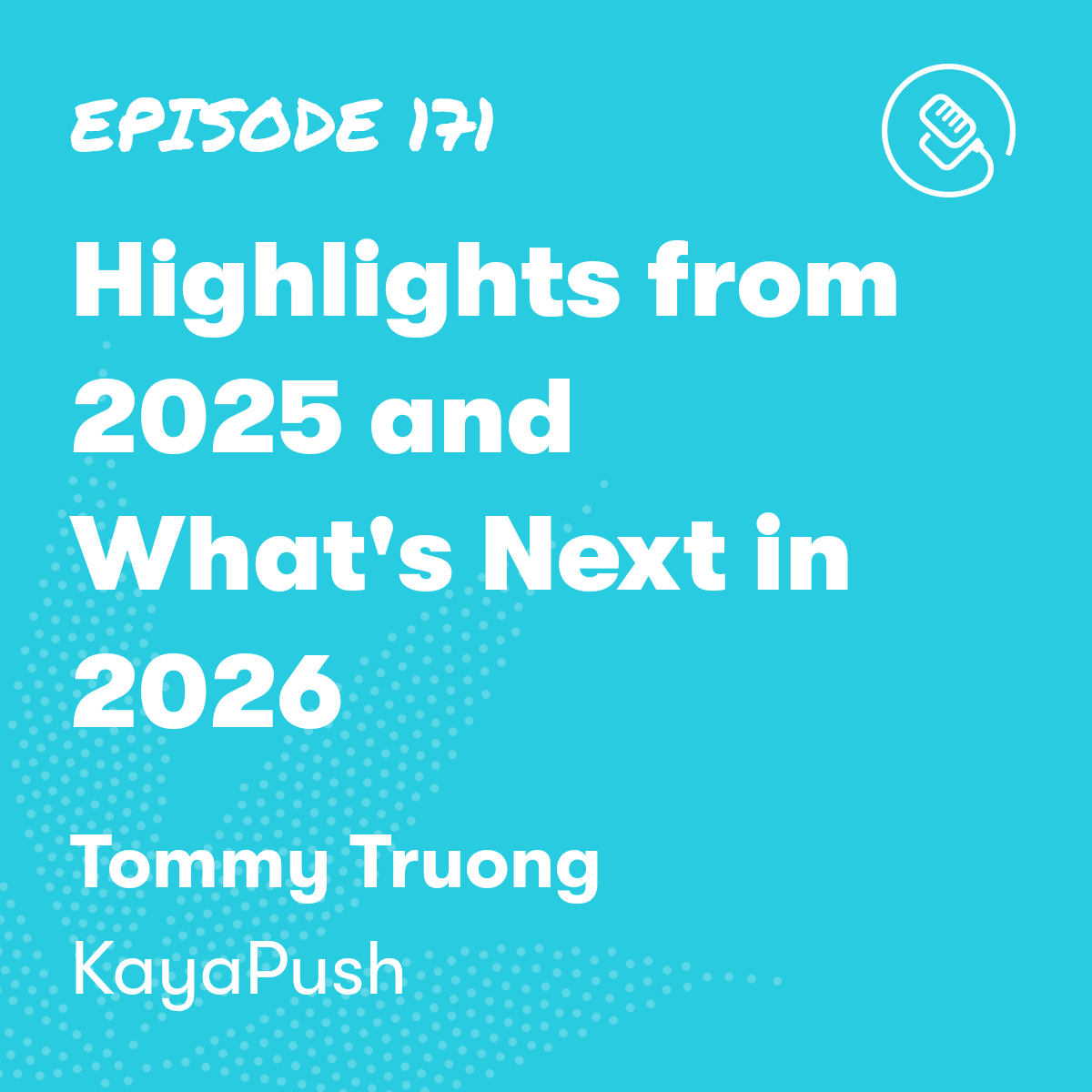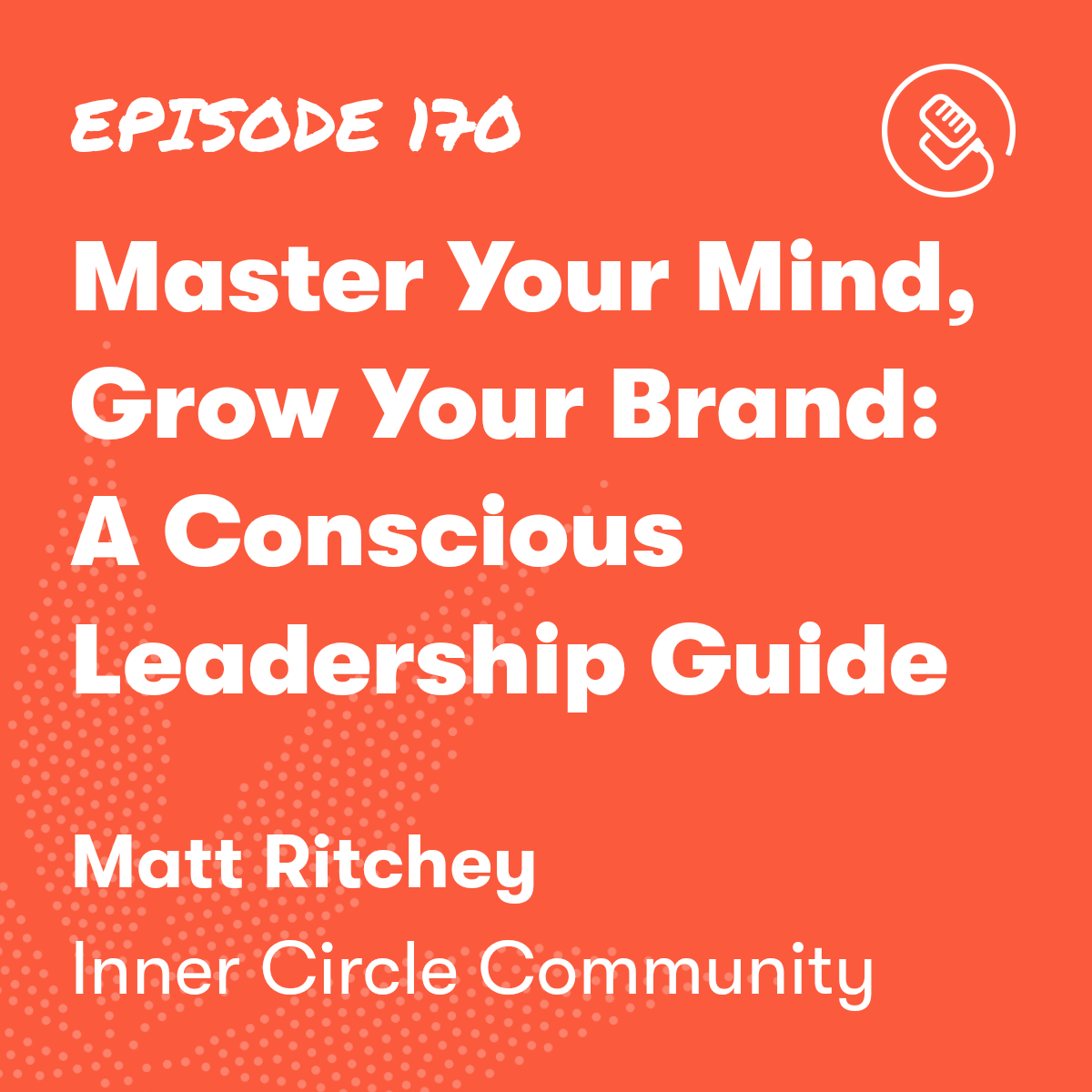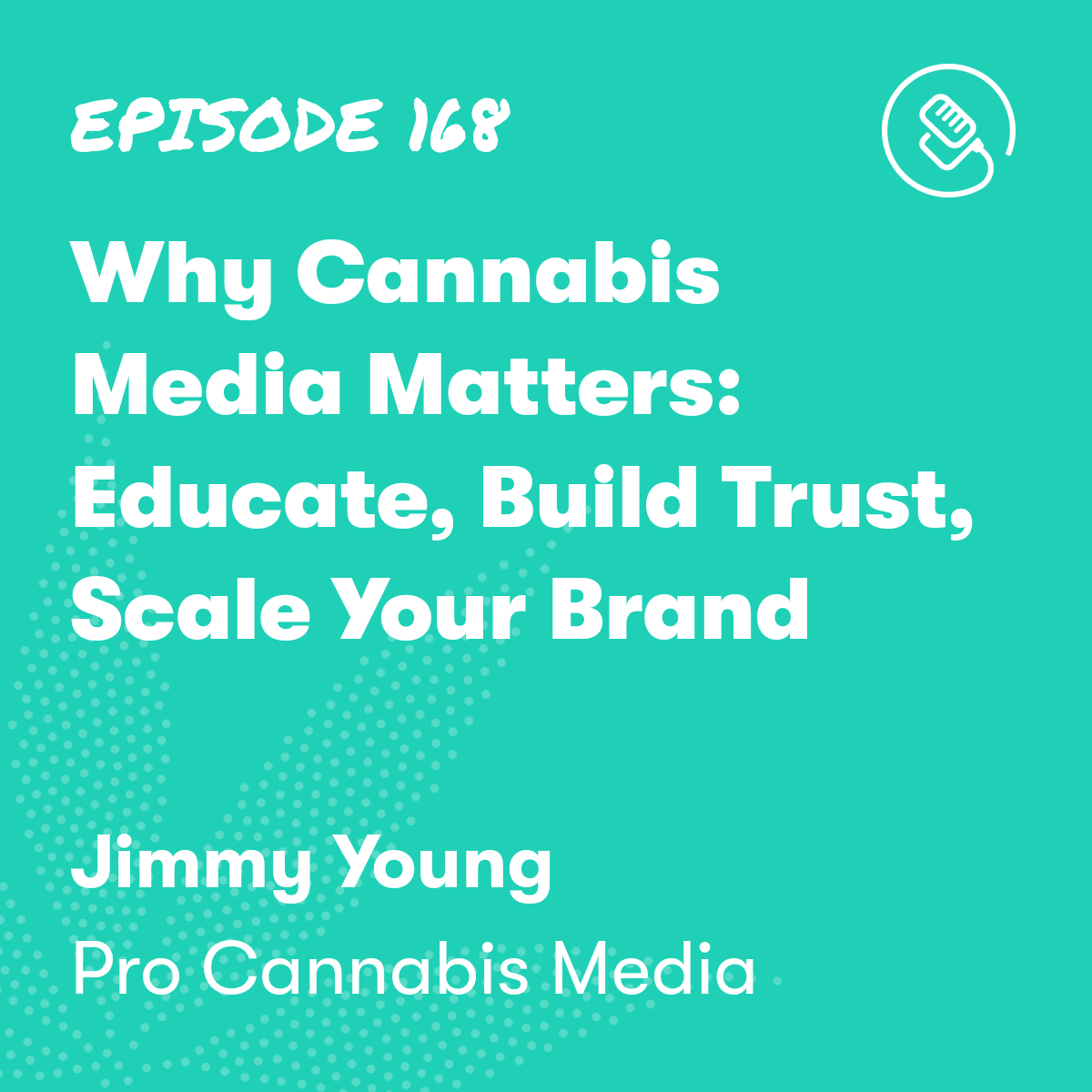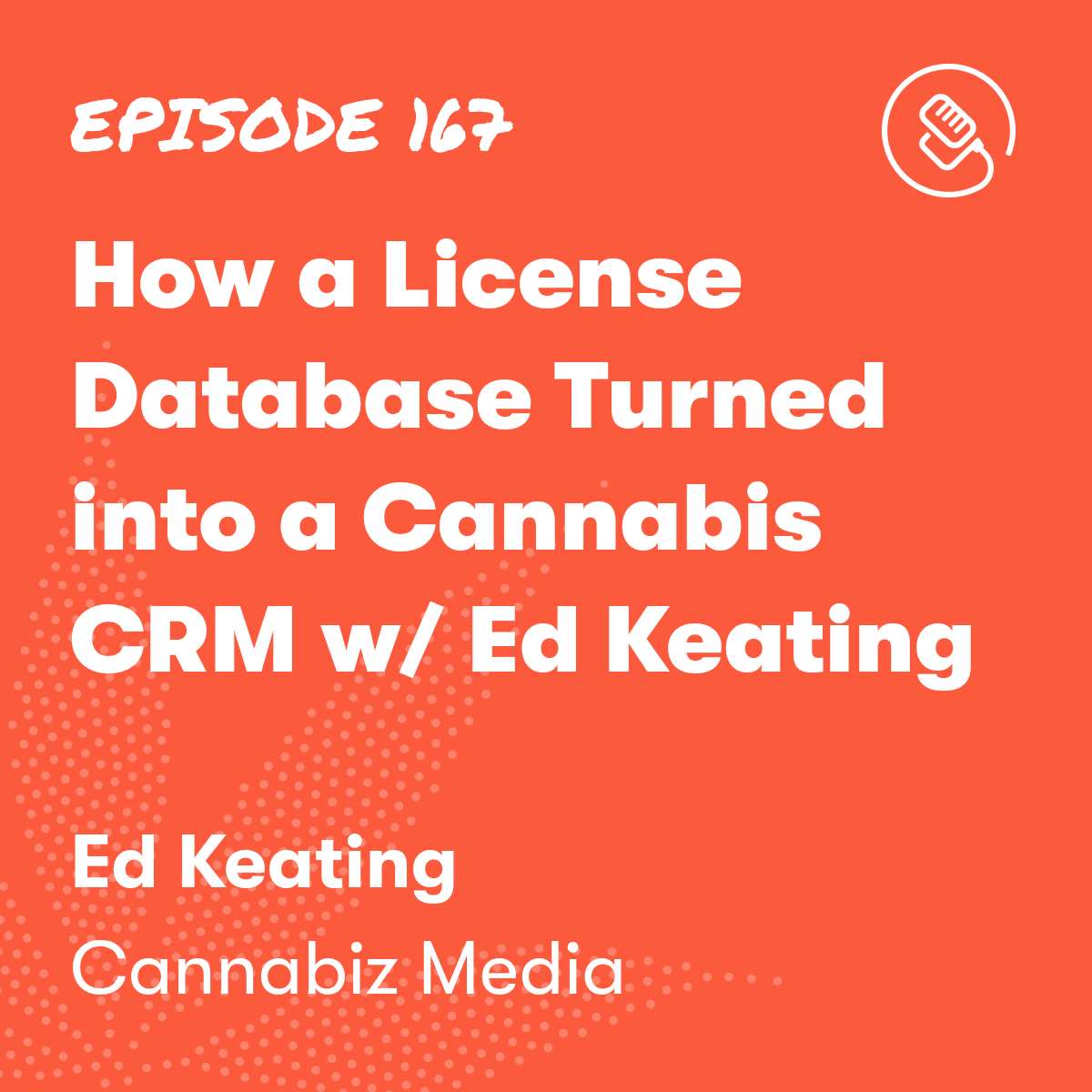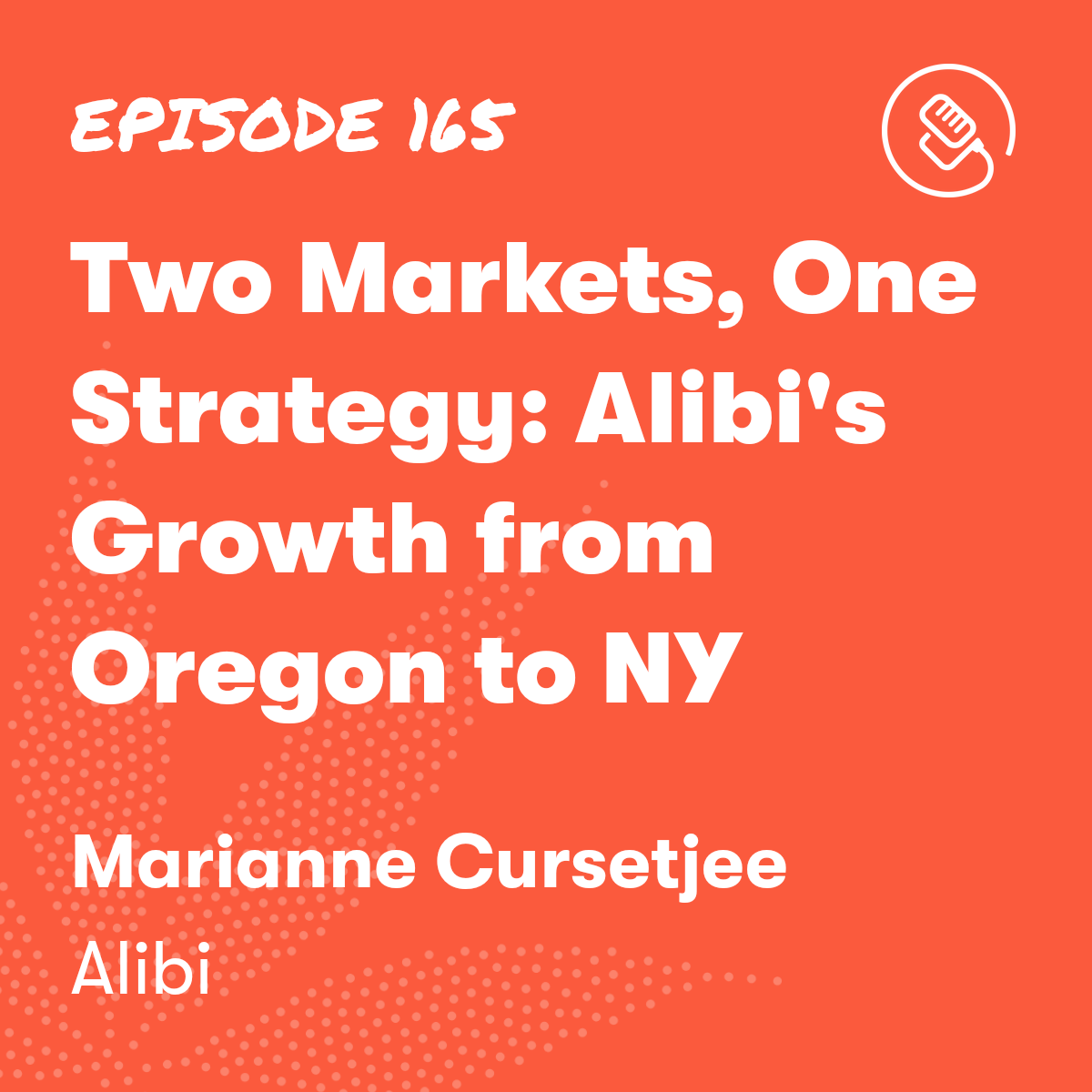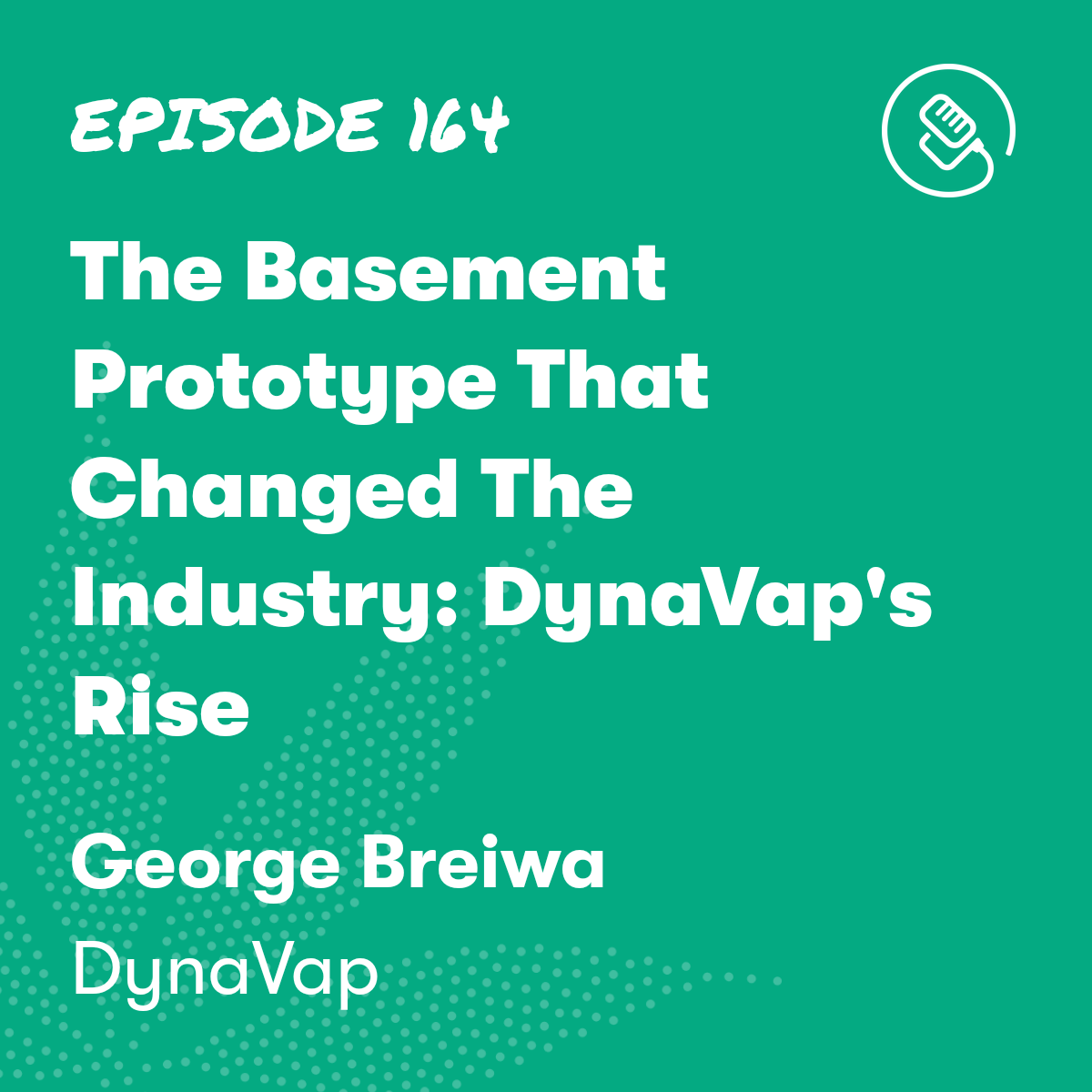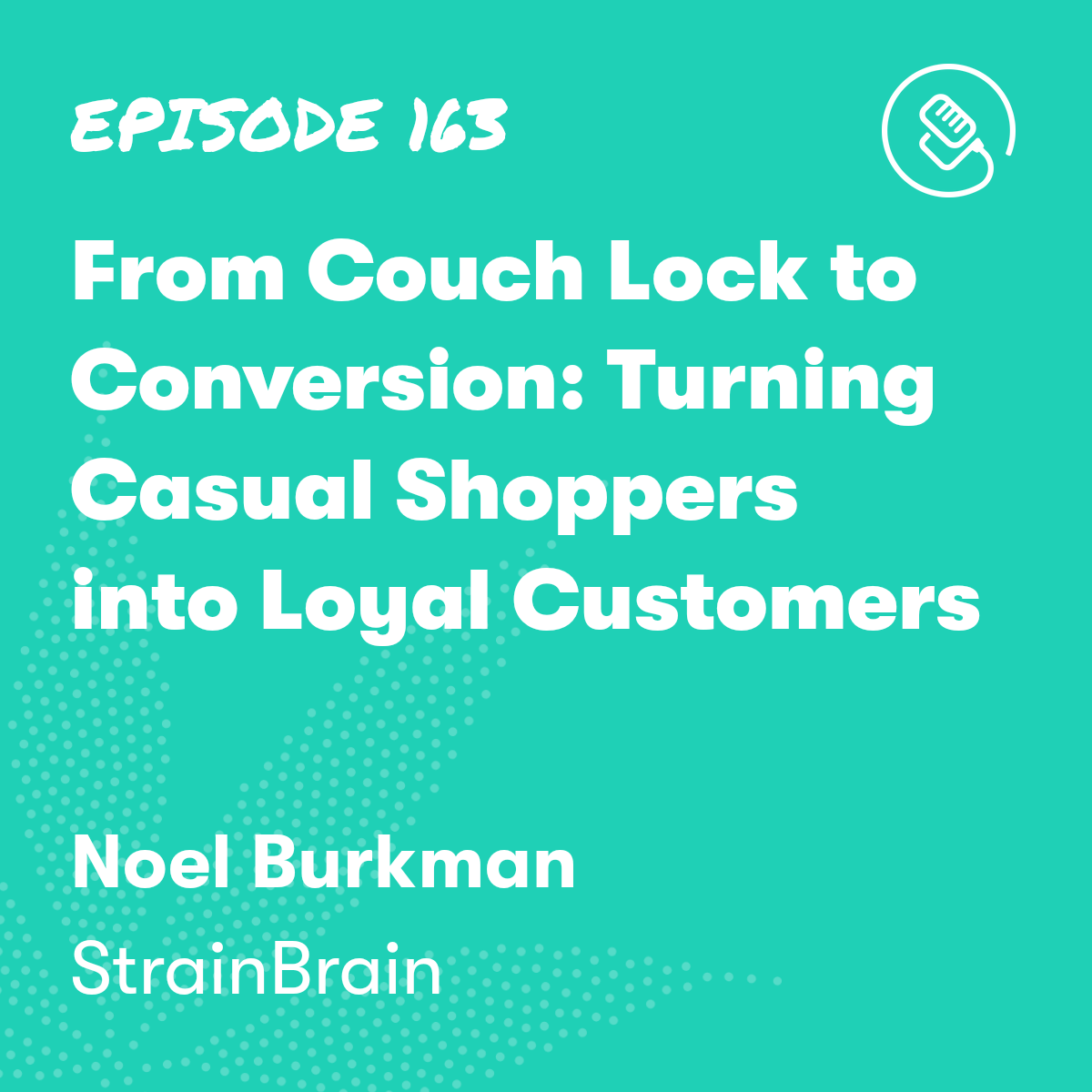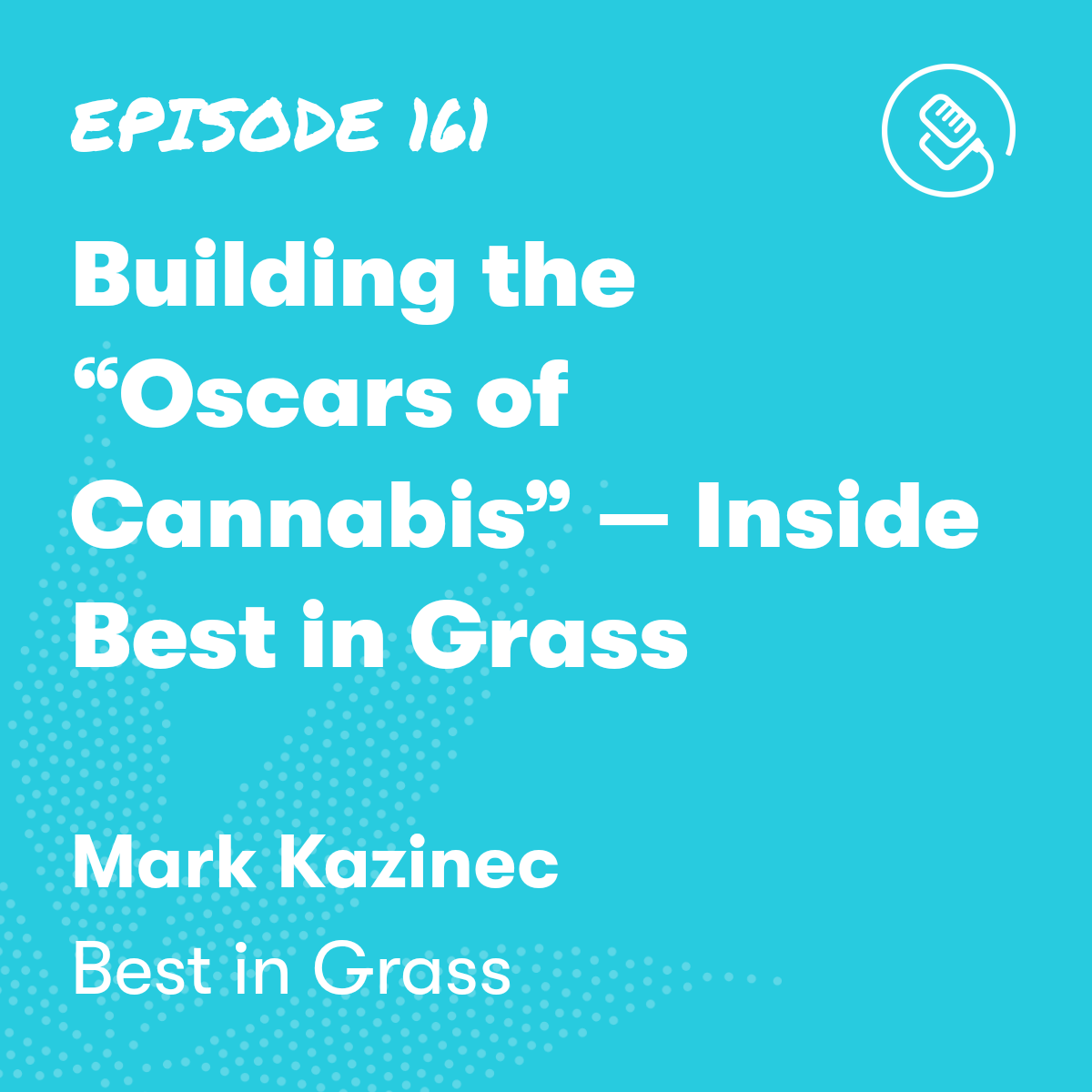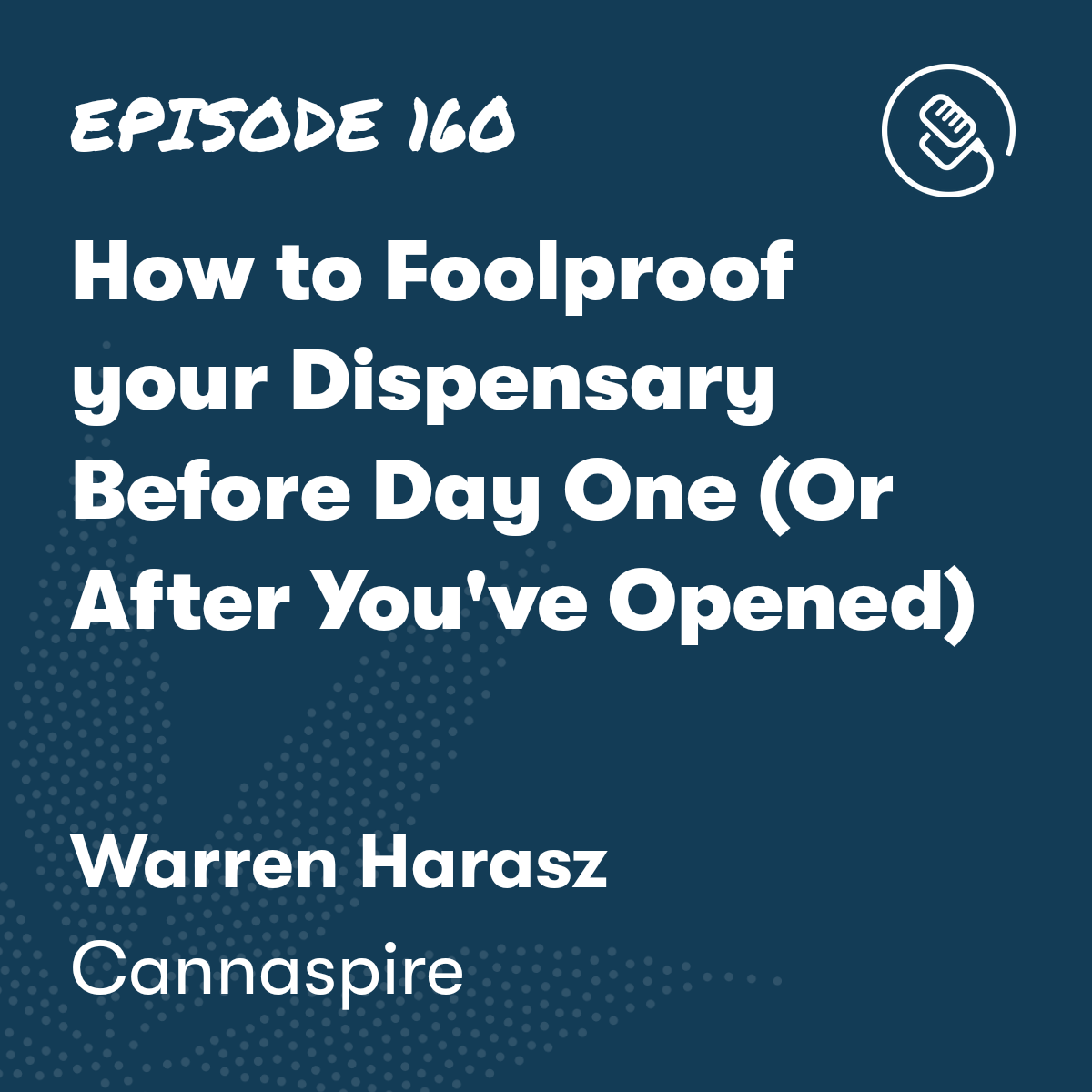

From STIIIZY to Cookies: Running a Winning Dispensary in 2024
Episode Description

Episode Transcript
Intro: [00:00:00] Welcome to the KayaCast, the podcast for cannabis businesses looking to launch, grow, and scale their operations. Each week, we bring you interviews with industry experts and successful retailers, plus practical tips and strategies to help you succeed in the fast growing cannabis industry.
Tommy: Hey guys, in this episode, we are joined by Mike, the CEO and founder of Temeka group. Temeka has built over 600 dispensary locations across the nation. And has helped brands like STIIIZY and Cookies launch successful stores. Mike talks about what he would look for when choosing a dispensary location. As well as what he would prioritize when building a store layout. If you guys are looking for a location today or building out a store, This episode's for you. It could possibly. Help you save hundreds of thousands of dollars. I hope you guys enjoy.
Thank you so much for joining us [00:01:00] today.
Mike: Hey Tommy, thank you for having me. It's an honor to be part of your program today and look forward to spending a few minutes talking about, uh, the cannabis Market.
Tommy: You guys have helped build over 600 dispensaries.
What's your advice to an entrepreneur that's choosing a location for their business?
Mike: You know, I think there's a couple of different factors looking at it, you know, the area, you know, like You're, you're looking at California versus New York. So let's go to New York. You know, there's different local, locations.
So is it a neighborhood location like Terp Brothers? We, you know, they, they pick their location up in, in the Queens area, but it's very, you know, neighborhood focused. Then we have other clients that are going into areas like Times Square. That's touristy, you know, kind of locations. Um, greenery spot up in, you know, Johnson City.
So I think it's all depends on what factor of customers you want to service and secondary is the market you want to be in. You know, um, you know, in California, it's depicted a lot on the regulations of, you know, where they force it and stuff. But I think it's [00:02:00] depending on what type of store you want to service, the amount of people you put through, but, you know, neighborhood versus, you know, a tourist location is one.
Tommy: If you had to pick between the two, if you had to open a store today, where would you go?
Mike: Neighborhood. Because I look at these things eventually becoming your liquor store. And I look at, you know, the commodity. The other thing I look at is the expense of tourism in those markets. You're talking about getting a customer once, taking a bunch of pictures, spending a lot of time on that, you know, customer journey going through them.
And poof, they're gone. Versus customers are going to be where your repeat customers that come in every week and, and, and you basically create that family with them. It's that family neighborhood market. You walk in and, Hey, Tommy, how you doing? You want your pre rolls like you bought last time? Like, you know, that, and you feel special about the, the, the, the, um, engagement with that, that, that customer versus, you know, somebody that's a Times Square.
Granted, you're going to put a lot of people through the store, but what's the, you know, there's not going to be very [00:03:00] heavy retention and secondary too, is it's going to be a lot of, uh, of customer care to get to that sale.
Tommy: It sounds more expensive to serve new customers.
Mike: Yes, 100%. 100%.
And what I'm going to compare this a little bit to, we did the Lakers Clippers store in LA. The biggest problem they had is people getting bussed in, they wanted to buy a jersey, take a picture of it, and return it. So you've got people coming there for the wrong reason. They're not coming to buy stuff, you know what I mean?
And that's where I, I see a lot of giggling people taking picture of cannabis inside, you know, Times Square versus somebody that's serious that wants to go and they're getting their product. Just like somebody going and getting their, their, their, their vodka or their, you know, 12 pack of beers on the way home.
They're going to get their pre rolls or getting their flower. That's the type of customers and customer retention. So you can start counting on the Tommy as a customer and all these other ones every day that you have a good portfolio of your customers and the repeat customers.
Tommy: What other considerations [00:04:00] should somebody look into when choosing a location?
Mike: It's all about money. It's your building costs. So when you're looking at site selection is looking at the bone structure of what's there. And there's a lot of things that could be very expensive surprises. You don't want to be surprised. So that's what we get involved with a lot for the site selection.
So. Your bathroom is ADA compliant. You know, there's things that your bathroom has to be in a certain way. And in New York, a lot of these buildings that we've seen happen, they, they aren't that way. Um, other surprises, HVAC, you know, systems, they could be 80 to quarter of a million dollars to replace when you're talking about a building 15 stories high, that's a lot of money and a lot of expense.
So doing your due diligence, you know, I'm not going to name names, but I've been in, you know, some of these site selections where they've had me post, post mortem after they've executed and kind of get an L Y, and they're, we're asking questions. They didn't even know the building didn't have HVAC. And now they're going to have to have the [00:05:00] cost of burden to put on that.
And you know, once a landlord, you sign that you kind of signed with the devil, what you're going to have to put out. So having eyes wide open, so you could have a formated, you know, a game plan of what that cost is going to be and looking at that. So that, that's, that's, you know, obviously a huge consideration.
And then square footage. A lot of people get caught up into square footages and oh my god, I gotta have this size. You know, so what we do is look at the value proposition, the neighborhood market versus somebody that's gonna, you know, be in Manhattan versus outside. Look at the square footage and make it an ROI.
Look at the possibility of how many customers you can put through there. We've got little mathematical equations of Transactions per person, times the hours, and kind of figure that out. And that's, that's super important to look at, you know, the optimal score footage size, so you don't overbuy. Because, when you're talking Manhattan, you're talking about a lot of rent.
Those are some big rents that you see people, you know, um, paying 70, a rent. You gotta sell a lot of cannabis to pay for that. So, [00:06:00] you know, obviously, it's a big, you know, big, big undertaking to do that. And that's, you know, you know, huge considerations.
Tommy: So, you know, when somebody is deciding how big they want to go, what should be their thought process?
Cause I hear a lot about people talking about consumption when it becomes available, et cetera. When you're first starting out, How would you decide your first location?
Mike: So I would look at, you know, for us, the ideal space is about 2, 500 square feet. You know, we can go smaller, we can go bigger.
But 2, 500 square foot is that, you know, that, that, that sweet spot. The concern, you know, I, I talked to lots of people, Sir Stuart is one of the optimal people in consumption. The problem you have with consumption is to make money at it. If it's an extension of your customer offerings and you buy product and you get access to it.
Cool. I know a lot of people just want to have a consumption, consumption, consumption, but I think if you looked at a business, you know, practice the business aspect of it, it's gotta be an extension of the [00:07:00] sales of your store. It's a, it's an add on. It's part of the VIP package or something like that to get people to repeat customers.
If you try to do consumption standalone, I think it's a hard buck. I think in time. It's going to eventually become the bar. The problem is, is you can't drink alcohol, you can't do this stuff, so there's conflicts. And until drinks come, you know, a little more forbiddable. I think that's the other thing too, is, you know, having a drink that you could go and talk.
You could have a beer, I could have a THC drink. And we could talk. I think once again, it's, it's in time, I think it's gonna become a very popular aspect of it, but I think right now there's just some challenging times in new emerging markets, what the product offering is to make a consumption lounge work.
Now, if you're just talking about. You know, having somebody be able to smoke flour and do these things, you know, what we, what Sarah kind of shared with me too, is you talk about the health, talk about cleaning conditions, setting up those correct prerogatives to do there. And there's a lot of expense to it that people don't think about.
They just [00:08:00] think about the offering, not the background of costs and what that looks like.
Tommy: It seems to me that first to market in terms of consumption is probably not the best strategy.
Mike: No, I, I would definitely put that post mortem. Concentrate on your store. That's where you're going to make the money.
That's where you're going to get repeat customers. And you know what? Engage with their customers and see if they'd use it. Like don't get ahead of it, you know, go ahead and work through it and say, guys, if I had a consumption next door, across the street or up the stairs or downstairs, would you use it?
What do you think about it? Get the ROI, figure out the business plan by, you know, talking with your customers. I think that's the best value proposition because you don't want to assume anything and then you build out this build out and then you built it wrong. And then secondary two, it's not warranted.
People don't want it because you need to get that input. So to me, set up, concentrate on your business practice at the retail store and then plan on doing the consumption post mortem after the opening and you're getting money in [00:09:00] and you can figure it out. What's the correct value proposition for your, you know, for your clients coming in.
Tommy: You know, you mentioned a neighborhood versus tourists. Does the square foot matter when you're deciding between the two areas?
Mike: Obviously if you're in tourism and 40, you know, you know, you're 42nd street, somewhere around there, you got to push three people through. So we've got some stores around there.
We're doing, they're smaller, but you know, it's technology. It's kind of the turnaround in doing it. So you can make the smaller store work. It's just having a very well laid out functioning store that you got, you know, kiosks, you got the different technologies in there. You've got well trained people to throughput the customer experience as fast as you can and get that done.
Tommy: Is there anything else that you would factor in when choosing a location?
Mike: You know, obviously rent, square footage, the surrounding neighborhood you could feed off of. I was in Chicago last, or two weeks ago, talking to a guy.
You know, and he's, you know, talking about this location and I go around, it's like, [00:10:00] yeah, it's good for, you know, when the games are at the United Center, but day to day, it's not a neighborhood space. So to me, it's, it's a, it's a, it's a tactful when the Bulls are playing or the Blackhawks are playing, but that's it.
So you got to build your ROI and your business practice on that. On seasonal or aspects like that, you know, that those are just the considerations you got to look at because you can't think that people are going to be coming here during the daytime, you know, during off season to come here. So you got to be, you know, it's kind of like being that seasonal Christmas tree person or Christmas, but you know, it's going to be seasonal.
So you got to take the ROI, the business practices to fulfill those numbers, to make it successful and profitable.
Tommy: Yeah. And you know, some places it's just so expensive to have delivery too.
Mike: Yeah. No, absolutely. And delivery is a whole other math, you know, mess because, you know, 280 not being able to write off stuff, you know, I mean, cross door just closed up.
They're the biggest one in California. It's a challenging space. When you figure you can't write off vehicles, you can't, you know, cause they're plant touching it's 280 effective, man. That, that, you know, what's your biggest expense of vehicles [00:11:00] and express and maintenance and write off. And you can't do that.
I mean, That's a tough pill. I mean, hopefully if they reschedule, deschedule, whatever they're going to do, that could help. That'd be a massive win for, for delivery. You know, I mean, it's that, that, that one hurts.
Tommy: So, you picked out the location. What is the thought process that someone should have when building out their store and their store layout?
Mike: So what we do is, you know, obviously doing 600 stores, we've got a lot of experience. So what we do, we're not going to say that either one of our clients is perfect, but what we do is walk them through like, here's a cookie store. Here's a Stiiizy store. Here's a Ash Society store. We walk them through the different variations of how they do it.
You could pick the experience of what you want to do. We talk about the numbers these stores produce and they're like, Oh my God, you know, and, and go through that experience. So, you know, being a bodega versus being a fusion between the two or being fully deli style, what that looks like a lobby, not a lobby, like what are those things look like?
And so for us, it's the variable of our experience that we could show different options and how to make [00:12:00] that work. You know, with technology in the stores, how your placement, fulfillment, like how we go about doing this. And these are the stores that are small that are doing big numbers. We could just show how the fulfillment works in a store that's smaller, but putting out big numbers.
So that's what we feel like with our experience and what we're able to do. We could walk through multiple scenarios of how they could execute a store and it's their discretion of what their customer experience wants to look like. And then, and build from there.
Tommy: When I'm building my store, is there, what should be my consideration when thinking about treating new customers and repeat customers?
Mike: Oh, good question. Good question. Because, you the day, you know, I think, you know, we've talked about this in the past is there's a different experience, you know, when you come in.
Tommy, how you doing? Have you been here before? Oh, you haven't. Tommy, welcome. Hey, we got a new customer. You know, celebrate them. Make them feel warm and special because half the people come in, they don't know what to ask. They're a little concerned. They're quite, you know, they don't know technology. They don't know this stuff.
So I think for those, it's the white glove [00:13:00] service. You know, come on over here. Let me talk about it. I know there's probably questions you have to ask. No question is, is, is dumb. So don't be, you know, tell, ask me everything you want to hear because a lot of people, indica, sativa, you know, terpenes and shit, you know, it's like, what the heck is all this?
I, you know, I, I don't understand. You know, all I understand is this could possibly help with inflammation. It could help with sleep, like all these different things. I, you know, and have, have some conversations. Let's talk about it. Let's get over to the kiosk, or I could just talk to you one on one, whatever you feel more comfortable with, and do it.
Now, repeat customers, you know, now it's about efficiency and speed. So, did they pre order? Do they need to go to the kiosk to order? So, you know, to me it's like traffic control. You got coming in, Tommy, hey, what's up? You're back, bud. Hey, going on there. You wanna, did you pre order? Okay, go to the expressway to pick it up.
Have a good day, man. Talk to you soon. In and out, as fast as you can, because people, especially in New York, as we know, you know. It's about efficiency and effective. They don't want to wait in [00:14:00] line. And that, that is a distinct difference between California to New York. Technology's around California as much, but people drive everywhere.
Everywhere you drive, and I think people, when they get out of the car, they don't mind spending, you know, 10, 15, 20 minutes in the store because they're stretching their legs. Because, you know, we all know California's traffic sucks. You know, then you got to get back in the car and drive. So people aren't so much.
New York, whole different animal because people on subways people work in those neighborhoods or whatever a lot of people don't even have cars for God's sakes, you know, they want to get in and get out you go into a Starbucks I mean they got Starbucks just ordering kiosks now. They're McDonald's. You don't talk to people you order in a kiosk So everyone's so well established there.
The technology is just it's a given so they can go in order on the kiosk They can go to straight the express one that they pre ordered But once again, if you're the first time It's a, it's a white glove service. Talk to them, make them feel good, make them feel comfortable with asking questions, educate them and, and talk about the products and what they all are.
Tommy: Talking to you, it's just dawned on [00:15:00] me. I went to, I try to visit dispensary every week. And the last time I was at a dispensary. And they had the, there wasn't any kiosks, there wasn't any bartenders on the floor. You have to line up and order, over the counter. And even though nobody was rushing me, I felt a little bit rushed because there was somebody behind me.
And I just, I just didn't want to ask any questions. No, no, no, because like, you know, you're asking questions, you're like, oh my god, am I, am I taking too much time? Should I just order something? Yep.
Mike: Absolutely, man. And, and like you say, people don't know what they don't know and you don't want to feel stupid because you don't know.
And like you say, and then they get frustrated and then potentially cancel the order and walk out. So that's what I think, like you say, is just spending the time, you know, making sure they understand it. And you know, some of the well run stores that, you know, the, the bartenders standing over you and just say, let me know if there's anything caught, raise your hand and I'll come right up and get those done.
The other challenge with that is. People get, I'm not going to [00:16:00] say lazy, but they just want to have them do the whole thing on a kiosk. And sometimes I don't think that's the right way. You could have one person to for a kiosk or whatever that is to service all of them, but you have to have somebody out there.
And I think, you know, some people get intimidated. I'm, I'm an old guy, you know, technology, it still kicks my butt, you know, at times, but, you know, and I've been around a while. But it's like, sometimes I feel uncomfortable with my kids. They just jump in, run in and order whatever on those damn kiosks. Where me, I'm a little like, you know, something that probably could take literally 30 seconds.
I'm going to take a minute and a half because I'm not familiar with the buttons and the technology I'm a little intimidated with.
Tommy: What are some ROI considerations that somebody should consider when building out their layout?
Mike: Yeah. You know, what's happened in this market is, you know, it's, it's been beaten up a lot. So a year ago, all this money, everyone's going to be doing this stuff. And now today, you know, all the investors are squirmish. There's concern about injunctions or concerned in other markets. It's, it's, and [00:17:00] what I call it, it's, it's, it's.
Normalization of the market because it's supplying demand problems. It's all these things as you bring it on retail, you're trying to grow product and doing that stuff. It's all these ebb and flows. So for me, an ROI is, at the end of the day, what we've been doing is we've built from the ground up. What's your budget?
Okay? What is your budget? Okay, what I can give you is based on regulations within OCM or whatever, regulatory bodies over it. I can give you the minimum to open a compliant store and then build up from there, you know, You know, that show Fixer Upper, you know, you got this budget. Hey, 180, 000. I can build the store.
Here it is. Now you got 60, 000, 70, 000 left over. Now at least add these lipstick things. So kind of build from the ground up versus trying to swing at and, and, you know. People like, I don't need to spend this much. No, like I, I want to get you down to the lowest point and then build up because you know, there's some people that want to spend millions of [00:18:00] dollars and do a flagship and that's great.
But like when we talk about retail stores, even on the retail section, You know, a store on 5th Avenue we've done, they're gonna spend a lot of money, you know, traditional retailers, but their mall stores are subsequently down. You know, it's a watered down version of that. So it's kind of like the ROI is like, how much money do you want to put into it?
So what we try to do is we call it the race to the sticker to get your SIM sticker. Let's get the minimum cost of what it does. And then You know, you're open, then you, we could add some lipstick or if you want to add a few lipsticks in your budgets, you know, a little, a little more than that, that base budget to get in, then we could have conversations, but I would rather do it that way than spending all the money.
And then you're trying to, you know, build the, the, the, the business to do there is kind of set, puts a little pressure off. And that's the other thing is I tell people, you know, the ROI is the rent, you know, right in a 70, 000 hour check rent versus a 30, 000 versus a nine. Man, nine is nice, you know, and we have operators that they do that in a day, you know, that, [00:19:00] that, you know, they do twice that in a day.
So half their sales in one day could pay the rent. We have other people that accumulate multiple days of sales to come up with a rent. That's stress, you know, and in this market, you know, I think as time goes by and there's more and more stores, we always got prepared for the long game. You know, when you talk about retailers in the past, like when we used to do, you know, tons of retail when retail was good, you know, one to 2 million store was okay.
Two to 5 million was a good store. Cannabis tens of millions of dollars. Yeah. Those are, those are stores to be had out there. You know, they've got stores 50, 60, you know, million dollars a year. Eventually it's going to normalize and it's going to become just like your liquor store. And it's going to become that two to 5 million.
There's going to be a couple of little, you know, what I'd call unicorns that are going to do really well. But then the day it's, you know, it's going to become liquor stores, you know, at this sense of what it is. So I think, you know, looking at the ROI is, is the, the, the money you put into it, what that's going to take.
And then. [00:20:00] Spending less means you have to less to raise money to do it, and you can potentially self fund it, or, um, it's less equity you got to give. So you go in with less, less capital requirements to get your store open.
Tommy: That makes so much sense in what is the baseline it takes to open a store based on regulations and you know, that's the minimum.
Everything else is a cherry. So, yep. That's talkable ROI on things that you want to add.
Mike: Yeah, exactly. And that's like security, Meijer security. We've done a lot with where we work with a few other security companies, but Hey, here's your base cost. And then if you want card access, you want these things and we go through it.
We've, we've compressed the cost down as, as the bare minimum to get OCM compliant, and then we can enhance it from there. And that's what we talk about technology. You know, these are the good things about it. You know, these are the costs. Like, does it make sense to charge, you know, to get this screen or this screen or so forth and making sure they're integrated, you know, that they all work.
So it's not each one of these, uh, [00:21:00] uh, technology pieces is, is siloed, not talking to each other.
Tommy: Mike, what are some structural layout considerations that people should think about? To improve efficiency or to make sure that operations are efficient when they're running.
Mike: You know, it's the fulfillment room, the placement of it versus the cases.
When you're talking about product and think about a person and, and, or your, your employee. How much time they've got, excuse me, walk around to get product. And that's some of the things that are not thought of when you talk about an effective, efficient store is if you've got to go walk past to here, then somebody has got to walk past to there and think about doing, you know, a hundred, 500 transactions a day, they're walking a bunch.
So how do you minimize that customer interference and customer transaction time? So it's quick and efficient. So those are things that. You know, um, you look at Gotham Buds, you [00:22:00] know, walking in that store, they have an express window before you even go into the sales floor. Very effective. The, the, the fulfillment is right adjoint, adjacent to the sales floor.
So you get your product through their backstock. We have backstock in the cases. So literally I could. What do you need to, okay, great, there it is. Grab the product, bag it, go. Versus other ways we've seen it is, okay, Tommy, let me, I order it, it goes to the back, it's filled, it comes up here, da da da da da.
So it's just, you know, the customer, you know, turnaround to get the product pulled and out. And the customer fulfilled their order. So those are just things we look at. Um, and then the other thing too is looking at growth, you know, as you grow, like we're, you know, don't put the bathroom in the middle of the space because bathrooms, you don't want to move, you know, rooms and expansions and stuff like make sure the bathroom is on the back wall or sidewall or something.
So if you go to expand or chop up rooms. You're not contending with something that you really, you know, it's expensive, really expensive to [00:23:00] move is a bathroom. You don't want to mess with that. So those are just considerations you could look at for those aspects.
Tommy: I had never really thought of that as future growth.
Mike: Yep. So a lot of times what we do is somebody not sure of we push the front wall up a little bit. Like if they've got a bigger space, like don't use it all. Like let's have that as we can always pull the room back and we develop it for that. So it looks nice. Cause what you don't want to do is build a store.
When I kind of look as like a temp store, you see a Christmas or a Halloween store that looks just temporary because it's so big and they're trying to just fill crap in. Yeah. Let's make it come from the beginning. We can always move walls and do things and that's some of the stuff we do in the bigger spaces.
You can always, you can always change it up a little bit. You know, and that's, you know, the Temeka line, why we did a modular system. You can always add to it, do stuff. It's not built in that there's flexibilities to increase capacities with your customers and, and, and bud tenders and, and being able to add POSs.
Those are just some of the things we look at.
Tommy: I'm glad that you mentioned the Temeka [00:24:00] line and I want to talk a little bit about shelving. What are some considerations on shelving that retailers should think about? So
Mike: what we did is we saw the barrier cost. You know, we, we came down, we came up with our own, um, Temeka line system.
So we have three different display cases that kind of display the product and stuff. One's a very medical, low skew count because in medical, you typically don't have the skews. We have our, our, our drop down waterfall that we drive off a Stiiizy's. And then we got a higher end one. That's a museum style glass comes up, very elegant looking.
We have that. And then we have a couple of different wall systems that we have to display products. So, you know, right now in the New York market, they, they, they are not friendly with, Which here in California, everyone sells real estate, you know, for the shelf space, just because, you know, it makes you money.
In traditional retail, what, you go into Macy's, what do they sell? They sell shop and shops. What we call shop and shops that the, you know, 30 years we've been building stores, that's what's sold. You know, so you go into Macy's, you got a gas, you got, you know, uh, uh, Louis [00:25:00] Vuitton, they have shop and shops there.
That eventually is going to become part of it. Just like in liquor stores, you got, you know, different people buying real estate for advertising and stuff. It's eventually going to get there. I know regulations aren't there yet, but eventually in time, it's going to do it. But what we've done is categorically set them up for different products.
So you could set that categorically up and then in time, you could switch those out to be product related. So if, you know, A Rove, a Stiiizy or any of these type of brands, you know, wants to, you know, buy that shelf space. Eventually in time, they're going to be able to do it, advertise in that space and do that.
Um, the other thing is we're working with Hearst Media. Hearst is obviously a monster in the media game. They've entered into the canvas market. So what we're doing working with them is the advertising part in this, in what they're selling the consumer on social media. Is our screens will connect with that and then it'll be that, you know, when you have a Coca Cola commercial and that commercial you saw is instigated and put into that, the, the store environment, [00:26:00] we're starting to do that with cannabis and working with Cannes studio and be able to do that because of their size of it.
They're leveraged better to be able to. to advertise in a compliant way that nobody else can. So that's pretty excited about those new ventures for them as well. That's awesome. Yeah, no, it's really cool. So we've been really excited about bringing them in and having conversations. So we're working on a few brands right now doing that.
So it's super exciting. Once again, it's, it's normalizing and making, you know, what we're doing in a broader scale of being able to do it because of people like Hearst that has the ability to, to, to, to have access to people, you know, they're, they're, they're like number four on search, you know, behind just
Tommy: a few people.
So how would this work as a retailer? Like nuts and bolts.
Mike: Yeah, so basically, you know, they engage with, with CAN with us. We, you know, we've got our, what we call our shop in a box partners that we talk about. So Hurst just came into the space, [00:27:00] you know, Jeremy at Terp Brothers, Roland at Smakt, Good Grades is using them and stuff, what I love about it, it's decreasing the cost of like the weed maps and stuff.
Like it, and, but it's effective because they have real measurables of the, the tur, uh, the audience they could speak with and getting access to those customers to get into your store. So it's a lot bigger reach. I mean, the own, I mean, I don't know how many magazines and all the different newspapers and stuff.
And that's what we were talking about. Different people targeting Ithaca, you know, we're talking to Will. He wants to target the college, you know, like he doesn't really went after it. They're like done. And you know, when they talk about the price, like really, that's it. Because, you know, unfortunately in this space, People have been predatory, you know, in this space.
And that's, what's kind of exciting. You know, Rink Really High is another one that it's in the, in the box. There are websites that connect with all of us. We have this great relationship and, and what, you know, and what you've seen us with the Shop in the Box with KayaPush, you [00:28:00] guys are incredible. And when we work together, it gives a complete package of integrated tools, physical and tech that work cohesively together.
And we're value proposition in the right way for us to do not one store, but many stores, you know, with everybody. So I, I'm, I'm really excited about, you know, working with you guys, KayaPush, uh, rank really high, you know, Dachi, um, and all the different partners we're working with, Kain Studio, uh, and stuff like that.
Tommy: I wanted to ask you this and this is related to what we're talking about. Do you have any advice on common mistakes you see people make?
Mike: I've seen a lot, you know, I think that the, some of the bigger problems I've seen is, um, people don't know what they don't know. And a lot of people have a lot of friends that try to, you know, clamp on these people and they're the bros or whatever you want to call it. And I've seen a lot of friendships, unfortunately, get broken in the space because, Oh, I can do that.
I can, I can do the construction. [00:29:00] I can do this and they can't. And I can tell you so many different people that have Blown apart because of that and or referring somebody for the wrong thing that doesn't know what they do So what I always say is do your homework, you know Really go through and spend the time to do the due diligence of the people what they say and do and also too Is it worth what that bro is telling you to do?
Is it worth it? Because this is a friend And this is your, typically your life savings. You're putting into the store to invest in stuff and think about the risk of if it goes bad, what happens? I've seen a ton of friendships end because you F me or you F me or whatever. It's not, it's a hard position.
It's hard to do business with friends anyways, but let alone something like this is really tough and I've seen people put money into it, money into it. And then what happens is bro doesn't come through. They had a budget. They thought they could do the whole store for it. [00:30:00] And it gets two thirds bill. Now what?
Now, what do you do now? Got to go raise more money. And you've completely, you know, and you're leveraged because now I need the money to finish this thing and that those investors are going to know it and go, okay, these are my terms. You know, it's not the, The right side of leverage is on the wrong side.
You know, those investors have all the leverage. Unfortunately right now with everything they do, but if you do it right and you do things and, and you just got to set yourself up. But I, I think for me is, is bringing the right people to do it and do your diligence. You know, I had another one that brought a floor plan in and they didn't, you know, they had, they had more waste rooms, rooms than they did for stock.
Like. What are you, you know, like, what is going on here? Like, I don't understand, you know, but they paid this guy that, you know, said he knew what he was doing and [00:31:00] that's where it just, it's just a bummer when people take advantage of people and maybe they think they know what they're doing, but it's just, I looked at it and went, what the heck is this?
It's a horror story for me when you're, and we talked about this earlier in terms of the most successful people and businesses in history have one thing in common and they're the ones have made the most mistakes, but the name of the game is you cannot make a mistake so big that it takes you out of the game.
Tommy: Choosing a location and your build out is the most expensive thing you can do as a retailer. And if you do that wrong, that's a mistake that you can't afford.
Mike: And you go to the wrong location, too much expenses. You got to raise money. You don't have enough money. And then next thing you know, your whole vision of having this store and owning it. Is given away and you've lost it and more likely, you know, they're going to take over because they're predatory. It's just sad. And like you see, I totally agree. You're going to make mistakes, but you know, learn by them and go from it. But setting that business plan from [00:32:00] day one of what you want to do and how you want to do it, get those numbers.
You know, we work with CPAs all the time doing, you know, projections and stuff. I Really know the business, understand what that is, you know, 280E, you know, all these different things of write offs and stuff. Sometimes I still talk to people like, you can't do that. I didn't know that, you know, and it's just, you know, being smart, doing your due diligence and having your eyes all wide open versus banging down the door and, you know, thinking you're going to just muscle through this because something is going to kick your butt.
Tommy: Mike, anything else that we haven't covered from the location selection to the build out that you think is important for us to talk about?
Mike: You know, I guess the other thing that I would say is that's challenging in New York and this is, you know, once again, the normalization is SKUs and stuff.
That's something that, you know, I forgot to bring on the shelving space is, you know, in a new market, like that's where I look at some of these stores and they got a ton of SKUs, you know, it's, it's because you don't know What brands, [00:33:00] which brands are going to be good and which ones are, you know, and it's sad to say that, but you know, that's, that's a challenge right now.
So I think when you look at SKUs, I think there's a lot of SKUs on the shelving. As I've talked to some of the clients, you know, clients of ours, I mean, there's some that 400, you know, when you, you talk about a more mature market, you know, I know like when we talked to, uh, The head merchandising is cookies, you know, it's 80 to 100.
So I think, you know, I think unfortunately that's just a beast you're going to have to contend with because there's not, you know, as new ones are coming on, you can't get rid of this. You're trying to figure out what your consumer, your, your customers are going to like. So I, unfortunately it's kind of going through that, but I think in time it'll solidify and you're going to have your 10, 20 or whatever brands you're going to have.
And that, that's your solid foundation of your business. But that is one thing that's kind of messy. And it's not just New York. All of them are like that because as brands come on,
Tommy: How can somebody prepare for that? You know, you're in the market today. [00:34:00] It can't
Mike: obviously being aware of it and having conversations and really paying attention to what's selling, what not selling, because That's a differentiator too of making sure you have the product in your store that's good.
You know, like in California, Stiiizy, you know, was number one, you know, so everyone has to have Stiiizy, you know, so that was a big thing that, you know, you're going to bring in customers just for that. And then you're hopefully going to bring in some other, you know, cut, you know, other brands could sell as well, but having your base, knowing that this is the number one seller in the state, making sure you have that staple and then build upon that.
Tommy: What about from a shelving perspective, does, is there a shelving consideration in a emerging market versus mature market?
Mike: Yeah. You know, the problem is, is, you know, shelving, you only have so much limited space a lot of times, you know, uh, you know, I'm going to, I'm going to talk to Jeremy, you know, you go into the store, holy crap, there's stuff everywhere, you know, because he's trying, he's brought everything in, which it's the right thing to do to figure out his customers and support the customers.
But what I've told him in time, eventually that'll slowly slow down. [00:35:00] Um, you know, California, it's a little more, you know, In the case or in the shelf space, it's, you know, resonated with a Stizia, Rove or Rock Garden, you know, all the different brands, you know, that are there, they have their own shelf space and kind of have that.
New York, because of the, you know, you can't pay, buy, pay for the shelf space and stuff. Um, it doesn't do that right now. Um, I think in time that's going to change, but, um, we'll see what happens. I'm not a regulator knows what's going to go on, but I think right now is, is figuring that up and keeping track of product and their sales and what are those, those, those, those best sellers, you know, and I guess the other thing is, is, you know, when we talked about, you know, advice, knowing your COGS.
Knowing your product, do not get caught into the race to the bottom. You know, this, I guess this is one of the last things I would love to share with. Be careful on heavily discounts and go through that. Try to get more of the customer service. They come in. So price is important, but it's secondary. They, they feel [00:36:00] special because of the customer experience.
I think that's super valuable because what I've seen, you know, in the wholesale chain here in retail stores, people really don't know their true cog. And then what ends up happening in expenses. They discount to a place they're unprofitable. They, they, they're not making money and unfortunately they don't know.
And that's, you know, kind of sad and unfortunate, but it's so, I mean, this is not an easy space when you're talking about not being able to write off stuff and keeping track of a traditional business. So that's I guess what I would say too is know your COGS, know your business plan, have a good CPA or good person that's doing your finances to fully understand what that looks like.
You know, I was at 1871 two weeks ago and when the CPAs, she, she's, she's a full vertical there and she, and this is CPA. She was, I got in the space. I'm like 280E. What the heck is this? She had no idea. And she's a CPA. They've been around for 30 years doing [00:37:00] CPA work. And she's like, what? I had no idea. You know, that that's the challenge.
You know, people don't understand. You can't write off your expenses. And what that, and what? The complications are from that. And you know, that, and that's, you know, what we talked about earlier is the excitement of hopefully getting rescheduled, descheduled, whatever you're going to call it, that'd be a huge bump in the space.
So I, I really exciting for that and having these, you know, acting as a regular business to be able to write off your expenses, that, that's huge.
Tommy: Oh my God, we're going to Sizzler when that happens.
Mike: Yes, we are. No, we'll, uh, it's, it's amazing. You know, I, I heard a stat every two weeks ago, every MSO becomes profitable.
You think about what a monumental shift that is from not making money to making money. Curaleaf was like a 200 million switch. It's one of the, one of the, uh, uh, experts there from one of the tax payers, but 200 million swing, like that is huge. So that's the shot in the arm that this space needs. We, cannabis needs [00:38:00] some pickup to be able to do that.
And I really think this is the little one that we need right now to start creating a little better momentum on the side of the cannabis companies versus the investors and people on the outside of the circle.
Tommy: I want to, I want to thank you so much for joining us today. You dropped a lot of knowledge. How can our listeners find you?
Mike: Um, you know, Tommy, first and foremost.
You know, thank you so much to have you on here. Uh, value the partnership that, you know, Temeka Greenspace has done with you. We, we love you guys as partners. You guys are really good. And if anyone's considering, use these guys. These guys are amazing. Um, you could go to Temeka Group. Uh, you can go into our website, kind of take a, um, go in there and you could hit a link and get in contact with us.
But we're, uh, we're on, I think all the social media channels and stuff like that, but TemekaGroup. com.
Tommy: Temekagroup. com. Perfect. Thank you so much, Mike.
Mike: Hey, no problem at all. Thanks, Tommy. And we'll talk soon, buddy. Appreciate it. Talk soon.
Tommy: Hey everyone. Thank you for listening to this episode. [00:39:00] There's a great saying. A terrible operator in a great location will outperform and outsell a great operator in a terrible location. I hope you guys are successful. In the community that you've chosen to be a part of until the next episode. Take care.
Outro: Thanks for listening to the KayaCast podcast. We hope you enjoyed the show. Don't forget to subscribe to our podcast in your favorite podcast app, or visit our website to learn more about our guests and to access the full archive of episodes from the show. Join us next time as we continue to explore the world of cannabis and help you grow, launch, and scale your business.
